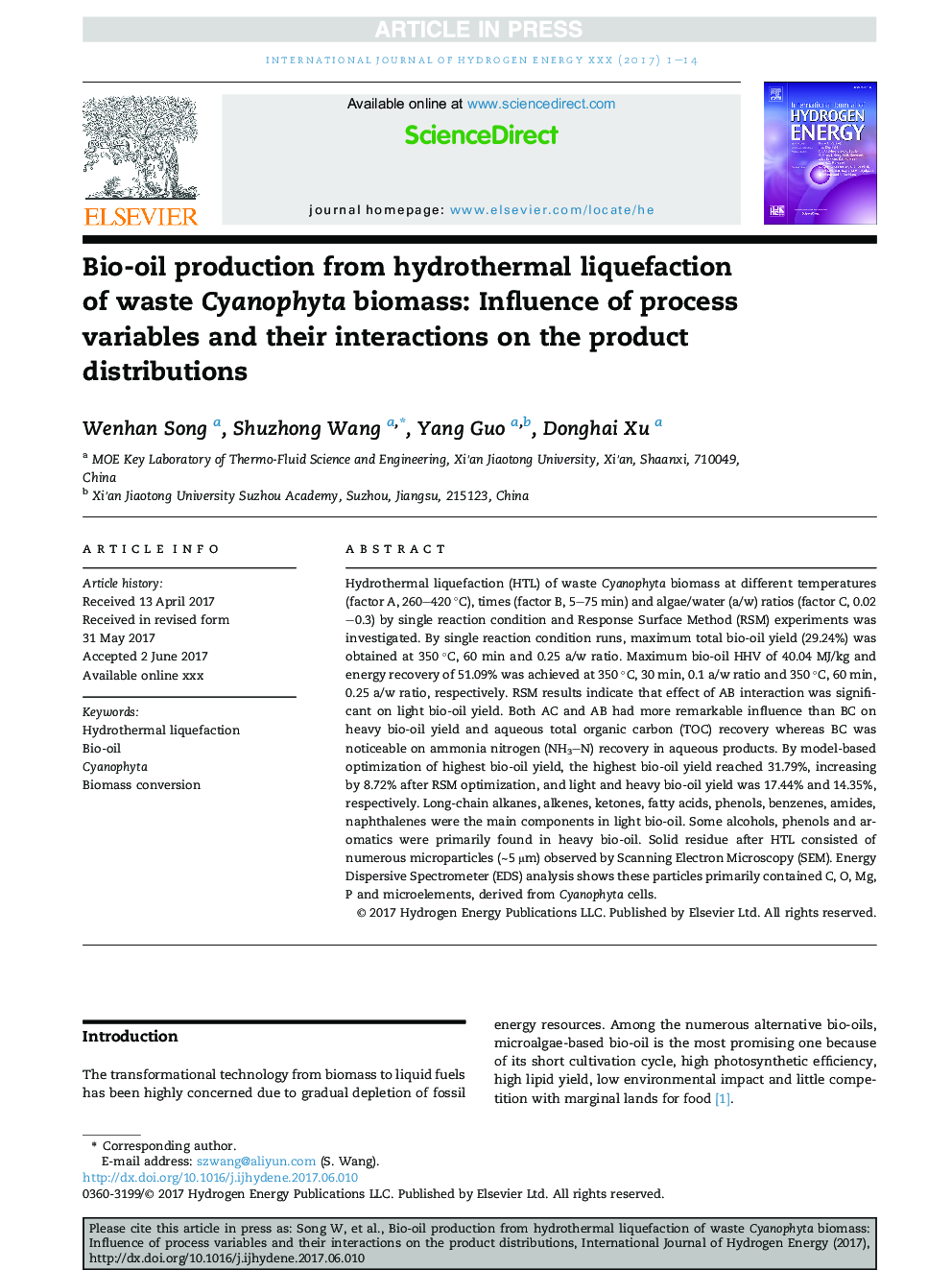| Article ID | Journal | Published Year | Pages | File Type |
|---|---|---|---|---|
| 5146672 | International Journal of Hydrogen Energy | 2017 | 14 Pages |
Abstract
Hydrothermal liquefaction (HTL) of waste Cyanophyta biomass at different temperatures (factor A, 260-420 °C), times (factor B, 5-75 min) and algae/water (a/w) ratios (factor C, 0.02-0.3) by single reaction condition and Response Surface Method (RSM) experiments was investigated. By single reaction condition runs, maximum total bio-oil yield (29.24%) was obtained at 350 °C, 60 min and 0.25 a/w ratio. Maximum bio-oil HHV of 40.04 MJ/kg and energy recovery of 51.09% was achieved at 350 °C, 30 min, 0.1 a/w ratio and 350 °C, 60 min, 0.25 a/w ratio, respectively. RSM results indicate that effect of AB interaction was significant on light bio-oil yield. Both AC and AB had more remarkable influence than BC on heavy bio-oil yield and aqueous total organic carbon (TOC) recovery whereas BC was noticeable on ammonia nitrogen (NH3N) recovery in aqueous products. By model-based optimization of highest bio-oil yield, the highest bio-oil yield reached 31.79%, increasing by 8.72% after RSM optimization, and light and heavy bio-oil yield was 17.44% and 14.35%, respectively. Long-chain alkanes, alkenes, ketones, fatty acids, phenols, benzenes, amides, naphthalenes were the main components in light bio-oil. Some alcohols, phenols and aromatics were primarily found in heavy bio-oil. Solid residue after HTL consisted of numerous microparticles (â¼5 μm) observed by Scanning Electron Microscopy (SEM). Energy Dispersive Spectrometer (EDS) analysis shows these particles primarily contained C, O, Mg, P and microelements, derived from Cyanophyta cells.
Related Topics
Physical Sciences and Engineering
Chemistry
Electrochemistry
Authors
Wenhan Song, Shuzhong Wang, Yang Guo, Donghai Xu,
